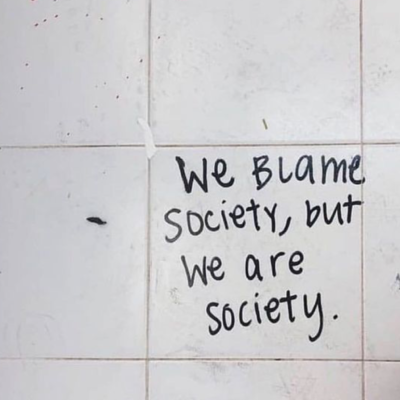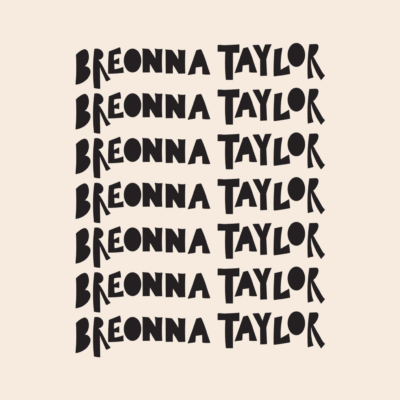
Just like Beyoncé fan Maggie Trela, who wrote about reconciling her whiteness with her fandom this week, I’ve been a Bey devotee long before Lemonade. When it comes to Destiny’s Child, I go LaToya deep.
I’ve watched Beyoncé become a powerhouse, a cultural force with a message she embodies: Black culture is beautiful, and black people should be embraced and empowered. I mean, YES. So I get pissed when people critique her, when they say she shouldn’t make her music political, when haters disguised as fans try to make her small. (Shout-out to Lauren Michele Jackson’s excellent piece, On Beyoncé, Beychella, and Hairography, for leading me to that link.)
Beyoncé has been there for me when I’ve been heartbroken, when I had a miscarriage, when I lost my dad, and when I needed to feel like a badass bitch. But I can only imagine that the impact she’s had on me is tiny compared to the impact she’s had on people of color, especially women. As Adele told her at the Grammy’s last year, both women barely holding back tears, “The way you make my friends feel, my black friends feel, is empowering.”
But, like I said, I can only imagine. Beyoncé has lifted me up as a woman finding my own voice; she hasn’t needed to assure me that my very existence is valid.
These experiences made me feel like I got a pass. I wasn’t fully white and I experienced racism, so, I got it.
I am white-passing—my mother is Pakistani and my father was Belgian—so I’ve always had a relationship with racism that I thought was considered and deep. As a mixed kid, I experienced it firsthand. Bullies in elementary school told me my mother wasn’t my real mother, a wrong-headed misconception she herself sought to right: One of my earliest memories is of my mom standing in front of my second grade class explaining that people in the same family can have different skin colors, something that she, as the adopted daughter of Dutch parents, knew very well.
I even experienced racism in my own family. My dad’s relatives had no problem openly judging those who looked different from them. To say that his decision to marry my mother was fraught would be an understatement.
All of these experiences made me feel like I got a pass. I wasn’t fully white and I experienced racism, so, I got it.
Wrong.
During the summer of the Charlottesville rally, I was working part time for a spiritual business coach in Venice. Though I didn’t love the job, it was a means to support the launch of On Our Moon. The day after the shooting, my boss, a white woman, commented on the Instagram post I’d just shared—a plea for white people, myself included, to take a good look in the mirror and acknowledge our role in the problem.
“You’re really going through something, aren’t you?” she said, looking up her phone.
I was taken aback. How could she not get this? I told her about an article I’d read, Layla Saad’s “I Need To Talk To Spiritual White Women About White Supremacy,” and urged her to read it. The piece had made me realize that we were all contributing to systemic racism; not engaging meant perpetuating.
“I don’t really agree with that,” she said breezily, as if choosing a different salad for us to share over lunch. “I don’t really see color. I just don’t feel called to speak out about this.”
Her indifference proved Saad’s point: Spiritual white women do not care about women of color.
My hallpass, the one that had let me navigate conversations about race from the vantage point of the oppressed had suddenly expired.
Suddenly I saw the problem everywhere: There were no women of color at the spiritual events I attended. None of the empowerment accounts I followed showcased their work and the female entrepreneurs they featured were strikingly homogeneous. Most of the mommy blogs I read were written by white, mostly blonde, ladies. The black men I saw on TV were portrayed as criminals or rapists, definitely not as good fathers, husband, or incredible business men (unless you count The Wire’s Stringer Bell).
What I realized after Charlottesville is that the racism I’d experienced paled in comparison to the experiences of other non-white folks. My hallpass, the one that had let me navigate conversations about race from the vantage point of the oppressed, not the oppressor, had suddenly expired.
Though my childhood experiences are valid, there is a profound difference between the way I walk into a space and the way my mother walks into a space: The difference is that I am white, and she is brown.
I’m embarrassed that it took me 29 years to realize this. I am mortified that it took people dying to wake me up. And I am deeply ashamed that I never fully gave my mother’s experience the credit it deserved because I felt that I, too, had experienced racism. I didn’t need to think about her: I got it.
It’s not the same and it never was. Maybe that’s why my ex-boss’s reaction hit me so hard: Not seeing color is no longer an option. Not seeing color devalues and erases people’s human experiences.
Which brings me to On Our Moon. Alison and I run this thing, but we rely strongly on the help of other incredibly talented women and our writers. It makes me proud that a lot of the people we’ve hired for numerous projects have been women of color. Our photoshoots feature as many skin tones as we can find, a choice that just feels obvious and right.
And I feel like we’re making progress, but an Instagram DM earlier this week reminded me that we still have a very long way to go.
Owning my option to ignore is a crucial part in addressing my—our—privilege.
In short, a woman of color reached out to say she was unfollowing us. It stung. I wanted to be defensive, to tell her that we were her ally and were on her side; I wanted to tell her about all of the projects we’re working on, and the ways in which we’re including as many voices as possible.
Part of me was also terrified to engage. I’m incredibly embarrassed to admit this, but I debated ignoring her message: Owning my option to ignore is a crucial part in addressing my—our—privilege. Engaging felt uncomfortable and vulnerable. If I ignored it, I wouldn’t have to deal with what she was saying, even if I didn’t fully understand it.
I caught this thought in action and decided to engage instead. Women of color are hurting, and they deserve to be heard. So I listened. What she wanted me to understand is that our platform isn’t doing anything to address white privilege—simply sharing stories from people of color, and paying them, doesn’t mean other people will listen.
She was right. If I, someone who wants to be incredibly inclusive, debated ignoring her comment, then what did I think other white people, the ones who don’t think about inclusivity, are doing?
Ignoring.
I got it. Sharing stories alone does not defeat deeply ingrained racism.
So, how do we address our privilege? How do we, On Our Moon, inspire meaningful and effective conversation around white privilege?
I don’t know the answers. I wrote an Instagram post about it and the only DMs I received were from women of color, further proving the disconnect. White women have the privilege to decide whether or not they want to engage.
Sharing stories alone does not defeat deeply ingrained racism.
But I want to engage. I want this platform to engage. And that means having some really, really hard conversations. Mostly with white women. It means looking inward and addressing my mother’s suffering. It means addressing the fact that the majority of the attendees at our events are white. It means that awareness of privilege, in every sense of the word, needs to be at the forefront of our weekly meetings. It means constantly evaluating my own privilege and checking any ideas of “getting it” at the door. It means deeply listening, even when it’s uncomfortable. We owe it to women of color. They are hurting, and still no one is listening, a choice white people are making everywhere.
The milestone that was Beychella is not a place to stop and congratulate ourselves for enjoying; it’s a quick water break on a long road ahead.
We, white women, have a lot of work to do.
So this is my plea: White women, can we start this conversation? We need to engage.
And to the women of color reading this, I am deeply sorry that I have chosen to ignore you at times. It was never intentional or malicious; it came from a privileged place I did not fully realize I possessed. My vow to you is to create conversation among white women. It will be hard, it won’t be easy, and it will take time. I know this because even in the very few conversations I’ve had with white women about white privilege this week, they have often chosen to ignore rather than engage. I have no right to ask this of you, but I beg for your patience and feedback. I wouldn’t have had this profound shift about doing more than just hiring and sharing the stories of women of color if it hadn’t been for a woman of color engaging with me.
I keep this quote from Saad’s article close:

And I’m keeping this reminder alongside it: Engage > Ignore.
Lay Betting Mechanics Explained Through Betzella’s Market Research
The evolution of betting markets has fundamentally transformed how individuals engage with sports wagering, introducing sophisticated mechanisms that extend far beyond traditional win-lose propositions. Lay betting represents one of the most significant innovations in this space, allowing participants to assume the role of the bookmaker by betting against specific outcomes. This reversal of traditional betting dynamics has created new opportunities for strategic wagering while simultaneously introducing complex risk management considerations that require thorough understanding of market mechanics and probability assessment.
Understanding Lay Betting Fundamentals
Lay betting operates on the principle of betting against an outcome rather than for it, essentially functioning as the inverse of traditional back betting. When a bettor places a lay bet, they are accepting liability for all other possible outcomes in an event, effectively becoming the bookmaker for that particular wager. This mechanism requires the layer to deposit a liability amount that represents their maximum potential loss, calculated based on the odds and stake of the opposing bet.
The mathematical foundation of lay betting centers on probability distribution and expected value calculations. Unlike back betting, where the maximum loss is limited to the stake amount, lay betting exposes participants to potentially significant liability. For instance, laying a horse at odds of 10.0 with a stake of $100 would require a liability of $900, representing the potential payout if the selection wins. This asymmetric risk profile necessitates careful bankroll management and thorough analysis of probability assessments.
Historical data indicates that lay betting emerged prominently with the introduction of betting exchanges in the early 2000s, fundamentally disrupting traditional bookmaker monopolies. The peer-to-peer betting model enabled individuals to trade positions on sporting events, creating liquid markets where odds fluctuate based on supply and demand dynamics rather than bookmaker margins alone. This democratization of market making has led to more efficient pricing mechanisms and reduced overround percentages in many betting markets.
Market Dynamics and Strategic Applications
The strategic applications of lay betting extend beyond simple outcome prediction, encompassing sophisticated trading strategies that leverage market inefficiencies and temporal price movements. Professional traders often employ lay betting as a hedging mechanism, creating risk-free positions by backing and laying the same selection at different odds throughout an event’s lifecycle. This approach, known as trading out, allows participants to guarantee profit regardless of the final outcome.
Market research conducted by various platforms, including comprehensive analysis from Betzella’s research division, has identified several key patterns in lay betting behavior that illuminate broader market trends. The data reveals that lay betting activity typically increases during periods of market uncertainty, with participants using lay positions to hedge existing back bets or capitalize on perceived overvaluation of specific outcomes. These patterns suggest that lay betting serves as a crucial liquidity mechanism in modern betting markets.
The psychological aspects of lay betting present unique challenges that distinguish it from traditional wagering approaches. The unlimited liability potential creates anxiety among inexperienced participants, while the concept of betting against outcomes can conflict with natural human tendencies to support preferred results. Research indicates that successful lay bettors develop distinct mental frameworks that separate emotional attachment from analytical assessment, treating each betting decision as a mathematical proposition rather than an expression of preference.
Advanced lay betting strategies incorporate elements of statistical modeling, market timing, and risk diversification. Professional practitioners often maintain detailed databases of historical odds movements, identifying patterns that indicate optimal entry and exit points for lay positions. The integration of automated trading systems has further sophisticated these approaches, enabling rapid response to market movements and systematic exploitation of pricing anomalies.
Risk Management and Regulatory Considerations
Effective risk management in lay betting requires comprehensive understanding of variance, bankroll requirements, and position sizing principles. The Kelly Criterion, a mathematical formula used to determine optimal bet sizing, becomes particularly relevant in lay betting contexts due to the asymmetric risk-reward profile. Many experienced lay bettors adopt fractional Kelly approaches, reducing position sizes to account for estimation errors and market volatility.
The regulatory landscape surrounding lay betting varies significantly across jurisdictions, reflecting different approaches to consumer protection and market integrity. Some regions have implemented specific licensing requirements for betting exchange operators, while others have integrated lay betting within existing gambling frameworks. The regulatory evolution continues to adapt to technological innovations and changing market structures, with particular attention to issues of market manipulation and insider information abuse.
Liquidity considerations play a crucial role in lay betting effectiveness, as insufficient market depth can prevent position closure or force unfavorable price acceptance. Market makers and professional traders contribute significantly to betting exchange liquidity, but their participation creates additional complexity for recreational participants who must compete with sophisticated algorithms and professional analysis. Understanding liquidity patterns across different sports and time periods becomes essential for successful lay betting implementation.
The integration of artificial intelligence and machine learning technologies has begun to influence lay betting markets significantly. Automated systems can process vast amounts of data to identify pricing discrepancies and execute trades at speeds impossible for human participants. This technological arms race has raised questions about market fairness and the long-term viability of manual trading approaches, while simultaneously improving overall market efficiency and reducing pricing errors.
Lay betting mechanics represent a fundamental shift in how betting markets operate, introducing peer-to-peer dynamics that challenge traditional bookmaker models while creating new opportunities for strategic engagement. The complexity of these systems demands thorough education and careful risk management, but offers sophisticated participants tools for more nuanced market participation. As regulatory frameworks continue evolving and technology advances further integrate into betting platforms, lay betting will likely become increasingly important in the broader gambling ecosystem, requiring ongoing analysis and adaptation from all market participants.






LET'S TALK:
1 Comment
WHAT READERS ARE SAYING ABOUT THIS ARTICLE